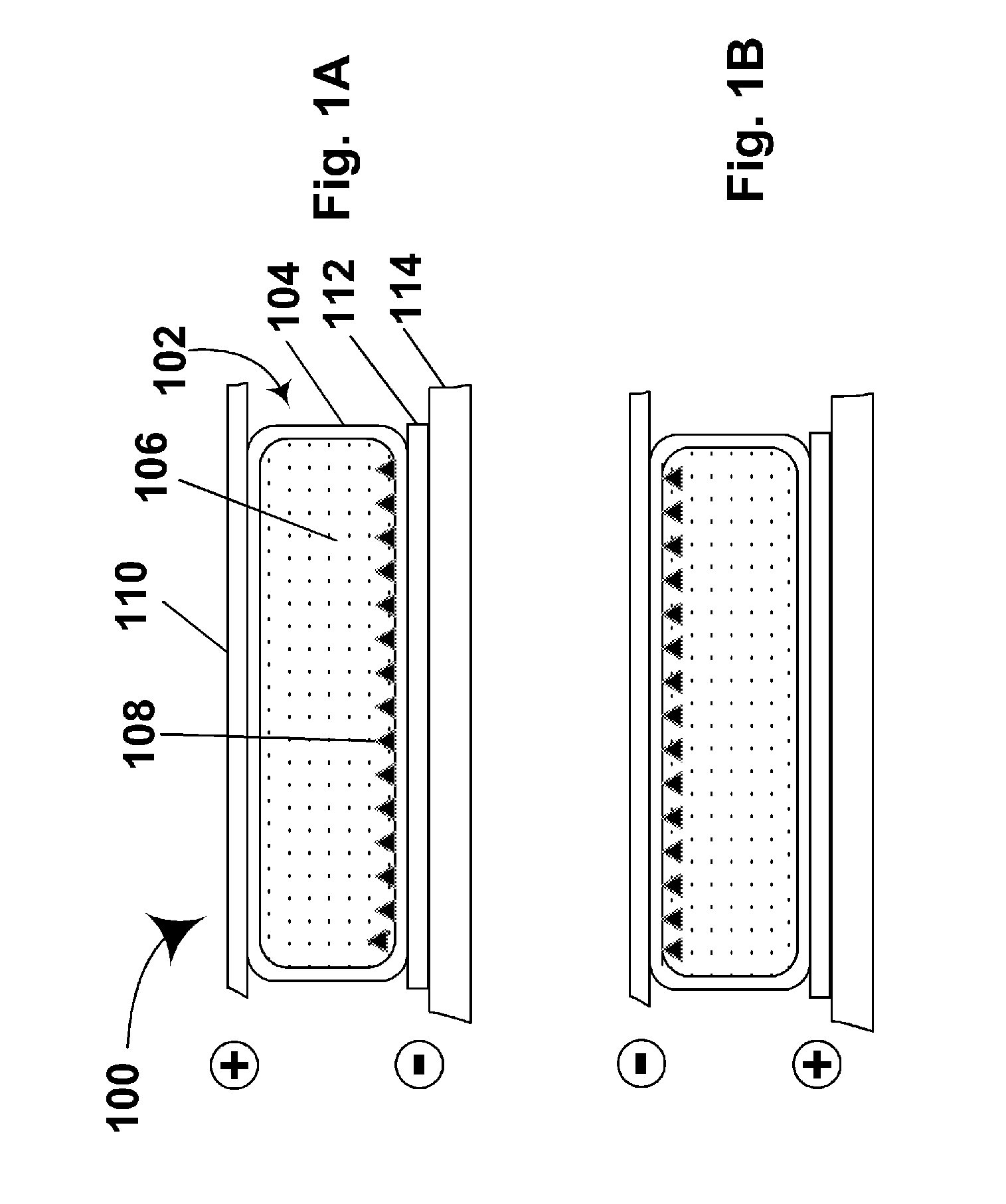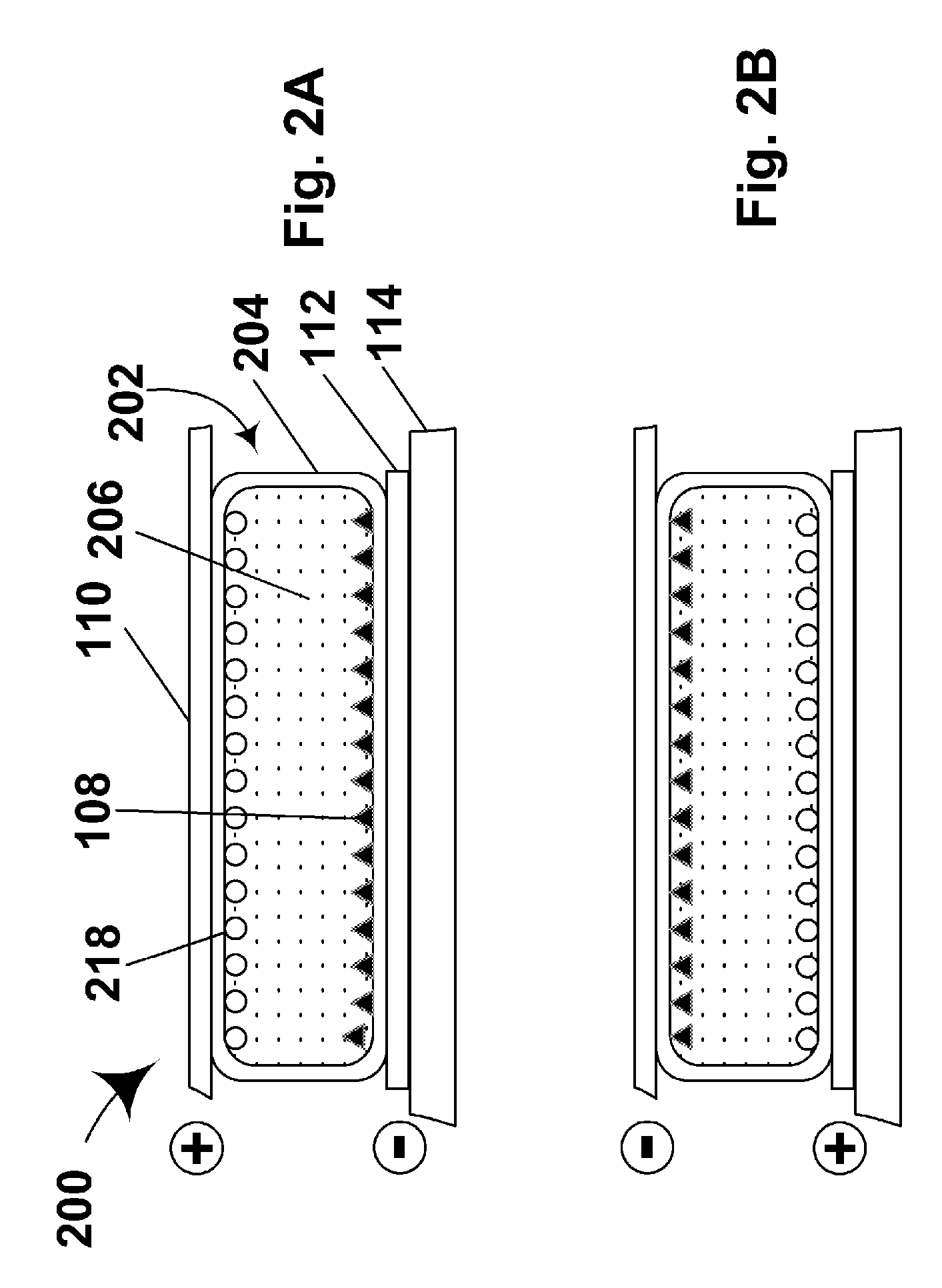Materials for use in electrophoretic displays
a technology of electrophoretic media and materials, applied in the direction of instruments, door/window protective devices, constructions, etc., can solve the problems of inadequate service life of electrophoretic media, preventing widespread use, and gas-based electrophoretic media being susceptible to the same types of problems
- Summary
- Abstract
- Description
- Claims
- Application Information
AI Technical Summary
Benefits of technology
Problems solved by technology
Method used
Image
Examples
example 1
Measurement of Overlap Concentration
[0073]It is known that the concentration of polymer needed to cause stabilization by depletion flocculation in a liquid is related to the overlap concentration of the polymer (i.e., the concentration at which the polymer chains begin to overlap one another). Accordingly, a series of experiments were conducted to determine the overlap concentration of polystyrenes of varying molecular weights in a solvent mixture which can be used as a fluid in electrophoretic media.
[0074]The overlap concentration C* is given by the Mark-Houwink equation:
C*=(KMa)−1
where K is a dimensionless constant. M is the volume average molecular weight in Daltons and α is proportional to the solubility of the polymer in the solvent. Accordingly, C* at any given temperature can be determined by plotting the specific viscosity of a polymer in a liquid against polymer concentration.
[0075]In these experiments, polystyrenes having volume average molecular weights from 382 to 983 kD...
example 2
Measurement of Optical State Stability
[0077]A series of experimental variable transmission windows were produced using polymer-dispersed polystyrene electrophoretic media of the present invention. These experimental windows used varying concentrations of five different polystyrenes with molecular weights varying from 97 to 983 kD. All the polystyrene samples had narrow polydispersisity with Mw / Mn not greater than 1.3. All electrophoretic media used the same 1.7:1 v / v mixture of Cargille 5040 and Isopar G as in Example 1 above.
[0078]Each window was driven to its maximum transmission optical state, which (it was known empirically) tends to be the least stable state of such media. The optical transmission was measured immediately after the end of the drive pulse and after the medium had been thereafter allowed to stand undriven for one minute; the former transmission is denoted T and the difference between the two values ΔT. FIG. 7 plots the normalized ΔT (i.e., ΔT / T, expressed as a pe...
PUM
| Property | Measurement | Unit |
|---|---|---|
| refractive index | aaaaa | aaaaa |
| refractive index | aaaaa | aaaaa |
| refractive index | aaaaa | aaaaa |
Abstract
Description
Claims
Application Information
 Login to View More
Login to View More - R&D
- Intellectual Property
- Life Sciences
- Materials
- Tech Scout
- Unparalleled Data Quality
- Higher Quality Content
- 60% Fewer Hallucinations
Browse by: Latest US Patents, China's latest patents, Technical Efficacy Thesaurus, Application Domain, Technology Topic, Popular Technical Reports.
© 2025 PatSnap. All rights reserved.Legal|Privacy policy|Modern Slavery Act Transparency Statement|Sitemap|About US| Contact US: help@patsnap.com



